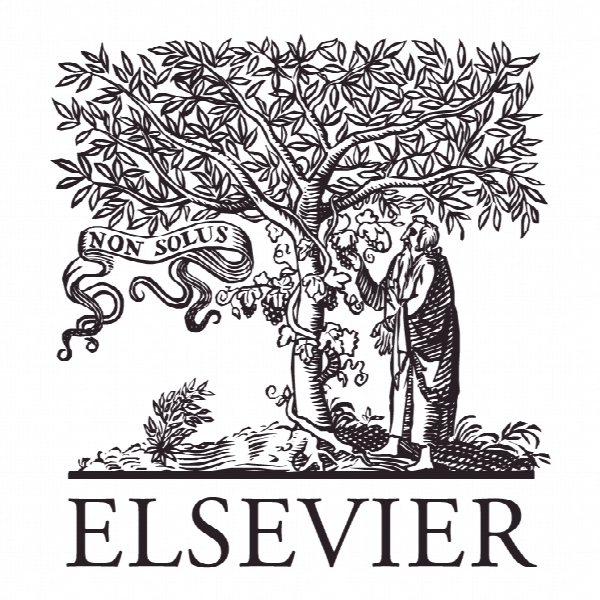اعمال تنوع سازمانی در مدیریت استراتژیک تحت محیط VUCA: شواهد از شرکت های با فناوری بالا در چین Applying Organizational Ambidexterity in strategic management under a “VUCA” environment: Evidence from high tech companies in China
- نوع فایل : کتاب
- زبان : انگلیسی
- ناشر : Elsevier
- چاپ و سال / کشور: 2018
توضیحات
رشته های مرتبط مدیریت
گرایش های مرتبط مدیریت استراتژیک، مدیریت تکنولوژی
مجله بین المللی مطالعات نوآوری – International Journal of Innovation Studies
دانشگاه Anhui University of Finance and Economics – China
شناسه دیجیتال – doi https://doi.org/10.1016/j.ijis.2018.03.003
منتشر شده در نشریه الزویر
کلمات کلیدی انگلیسی Organizational ambidexterity, Exploration, Exploitation, Strategic management
گرایش های مرتبط مدیریت استراتژیک، مدیریت تکنولوژی
مجله بین المللی مطالعات نوآوری – International Journal of Innovation Studies
دانشگاه Anhui University of Finance and Economics – China
شناسه دیجیتال – doi https://doi.org/10.1016/j.ijis.2018.03.003
منتشر شده در نشریه الزویر
کلمات کلیدی انگلیسی Organizational ambidexterity, Exploration, Exploitation, Strategic management
Description
1. Introduction With the global environment becoming more dynamic, firms are faced with discontinuity and rapid changes caused by technological development, disruptive innovations, intense global competition, alterations in governmental regulations, and shifts in industry structures (Beer, Voelpel, Leibold, & Tekie, 2005; Crossan, Vera, & Nanjad, 2008), which makes strategic activities a bedeviling challenge for managers. In a world where volatility, uncertainty, complexity, and ambiguity (VUCA) has become the “new normal,” the faith for a definite strategic plan is fading away, and adapting to changes constitutes a major strategic challenge faced by organizations. Defined as simultaneous actions undertaken by firms to address two heterogeneous situations simultaneously, to explore and exploit (Adler et al., 2009; Cho & Pucik, 2005), organizational ambidexterity has been considered particularly relevant in conditions of environmental volatility and uncertainty as it helps firms maintain strategic agility by being both aligned to the existing environment and adaptive to possible turbulence (Heracleous, Papachroni, Andriopoulos, & GotsiStructural, 2017). Thus, it is viewed as a key ingredient for an organization’s success (Lavie, Stettner, & Tushman, 2010; Stadler, Rajwani, & Karaba, 2014). Failure to manage these tensions can result in a success trap (too much exploitation at the expense of exploration) or a failure trap (too much exploration at the expense of exploitation) (Levinthal & March 1993), which are both fatal to firm growth. The fall of Nokia and Motorola has been viewed with such dilemma that their inability to simultaneously explore and exploit, to develop products for both the current and future, resulted in the decline of the organizations. For high technology (tech) companies which are particularly noticeable to compete in such VUCA environments, the need to manage this tension is more urgent than ever (Chandrasekaran, Linderman, & Schroeder, 2012). Although there is general consensus about the relationship between ambidexterity and performance (Derbyshire, 2014; Govindarajan & Trimble, 2005; Kitapçi & Çelik, 2013), few studies have been undertaken from the perspective of the nature of ambidexterity, or the mechanism of how it is applied in the strategic management process, let alone the fragmented units of analysis, which Raisch, Birkinshaw, Probst, and Tushman (2009) has identified as a piece-meal approach that is applied in different organizational levels. Our paper attempts to integrate both the operational level and organizational level of ambidexterity, while considering the background of a VUCA environment. Through a comparative case study of two Chinese high tech icons, it is observed that ambidexterity is not only a result of the dynamic ability responding to changes (Jansen, Tempelaar, van den Bosch, & Volberda, 2009; O’Reilly & Tushman, 2011, 2008), but also the interaction of the elements with special focus on the cognitive models from top management teams. We propose that the routines and processes from the experiential learning of organizations are promoted by the cognitive pattern of decision-makers from the top. Thus, the nature of organizational ambidexterity is revealed and the mechanism of how organizational ambidexterity takes effect is also discussed. Considering the need for balancing conflicts and dealing with complexity is urgent than ever in a VUCA environment, particularly considering the background of the transformation and upgrading period of the Chinese economy. We expect to shed light on the new thinking and development trends in strategic management. We are also interested in how the traditional Chinese culture, such as the “moderation” or the “harmonious thought,” has influenced the strategic management process that is unique to Chinese high tech companies.


